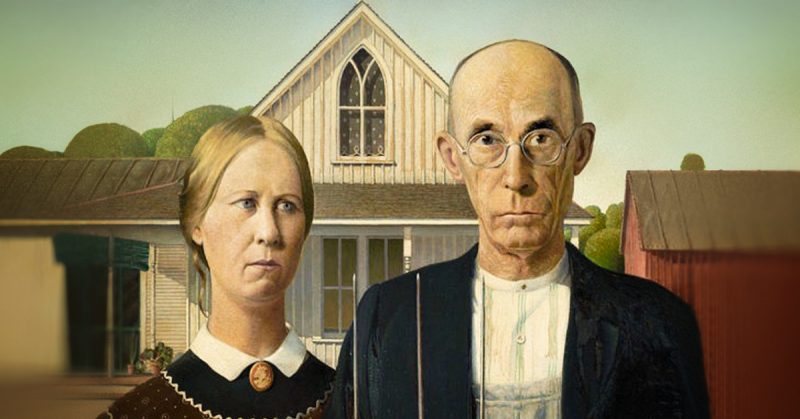Most of us are familiar with the painting called American Gothic. The painting shows the images of a man and a woman standing in front of a small wooden house. She is in her apron, he’s holding a pitchfork, and both of them are standing a bit stiffly and look a little grim.
Even though we recognize the picture, many people don’t really know much about it. Who were the figures that the picture represents? Did they mean something to the painting’s creator? Does the work depict a real house? A real place? Why does the couple in it look so dour?
Let’s take a closer look at the story of American Gothic.
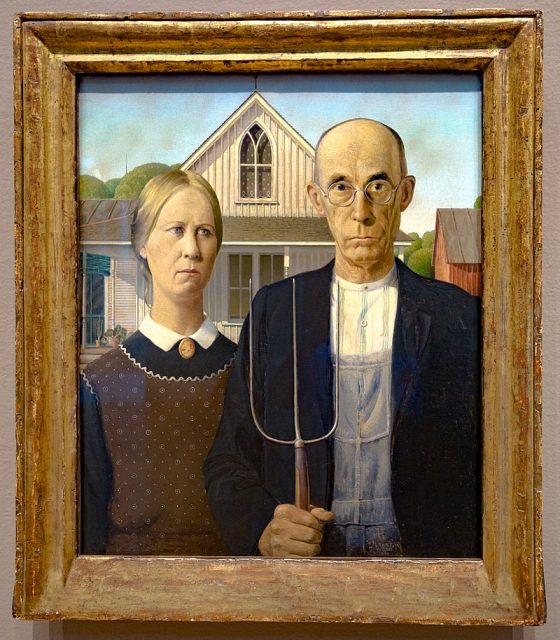
The painting was created in 1930 by Grant Wood, and it became an instant success, according to the Art Institute of Chicago, where it was first exhibited. Wood gained the inspiration for the picture when he was on a trip to the small town of Eldon, Iowa.
While he was there he noticed a small wooden house with a single large, medieval-style window on the second floor. It was built in the style known as Rural Gothic, or Carpenter Gothic.
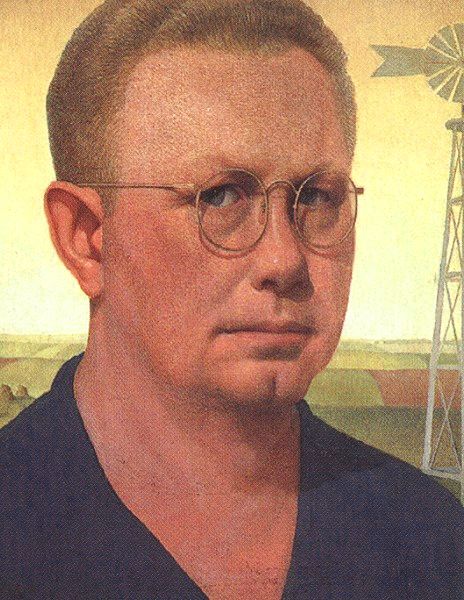
Mental Floss states that Grant noticed the house because he found the window a pretentious addition to what was otherwise a humble structure, and he sketched it on the back of an envelope.
For the farm couple standing in front of the house, Grant used his sister and his dentist as models. His dentist was Byron McKeeby, who was 62 at the time. Wood had a great deal of time over the years to observe McKeeby while sitting in his chair, and was very taken with the dentist’s hands, which were, in Wood’s estimation, strong and full of character.
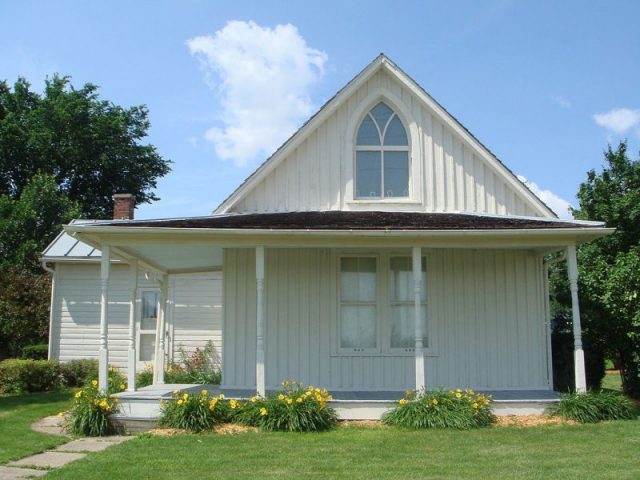
Wood originally wanted his mother, Hattie, as the female figure in the work, but was concerned that posing for an extended time might be too taxing for her. Instead he substituted his sister, Nan.
Wood’s mother still offered up her contribution to the finished product, though, as the apron and the cameo Nan wears in the image belong to Hattie.
He dressed his models in vintage clothing, making them resemble tintypes from an old family album, and painted them in a style similar to that used in the Flemish Renaissance using a high degree of detail. Interestingly, the picture was not created all in a piece. The house and both of the models were all painted separately, at three different times and locations.
Over the years since its creation, people have speculated on what Wood was trying to convey with the painting. Many people have concluded that Wood was creating a satire of small-town Midwestern values, attempting to evoke a certain hostility to outsiders and a provincial viewpoint.
The painter, however, said it was meant as an homage. Wood was an Iowan by birth, and eventually returned to his home state to settle. He had a real appreciation for the culture of the region, which leads other people to believe it was his homage to the rural American values that were such a part of him.
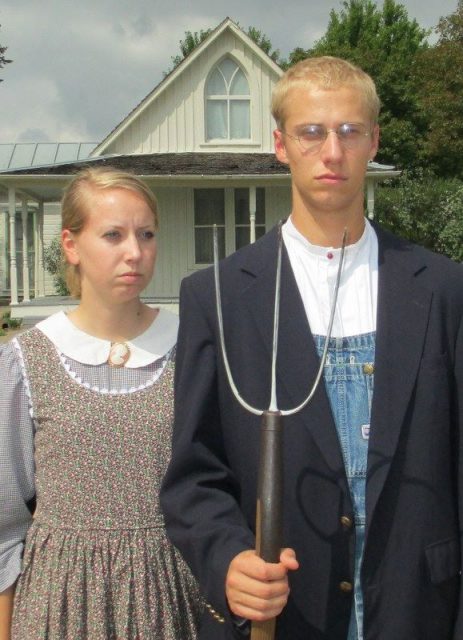
This school of thought believes that Wood’s intention was to offer an image of solidity, strength, and reassurance to people who were feeling disillusioned and dislocated during the difficulties that came along with the Great Depression. The farmer and his daughter are meant to represent the strength to endure.
Whether the picture is meant as a satirical statement or an image of strength and resilience, it became one of the works that fueled the rise of Regionalism in the world of art. The movement involved realistic renderings that avoided urban environments in favor of more rural settings.

The style was a large departure for the trends toward European Modernism and urban abstraction, focusing on realism and accessibility of subject. Wood, himself, supported the ideas behind the movement and was frequently dressed in overalls like a farmer.
Read another story from us: The Story Behind the Painting – Washington Crossing the Delaware
American Gothic continues to stir the imagination, nearly 90 years after its creation, as people continue to mine its details for hidden symbolism and meaning. It’s one of the most widely recognized works of American art and has become an icon of that time in history.
